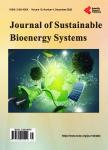Application of Aquatic Plants for the Treatment of Selenium-Rich Mining Wastewater and Production of Renewable Fuels and Petrochemicals
Application of Aquatic Plants for the Treatment of Selenium-Rich Mining Wastewater and Production of Renewable Fuels and Petrochemicals作者机构:Royal Melbourne Institute of Technology University Melbourne Australia University of Central Florida Florida Solar Energy Centre Cocoa USA
出 版 物:《Journal of Sustainable Bioenergy Systems》 (可持续生物质能源系统(英文))
年 卷 期:2014年第4卷第1期
页 面:97-112页
学科分类:1002[医学-临床医学] 100214[医学-肿瘤学] 10[医学]
主 题:Biofuel Bioremediation Pyrolysis Mining Wastewater Thermochemical Conversion
摘 要:Aquatic plants aggressively colonising wetlands are widely used for the biosorption of the soluble contaminants from wastewater and represent an attractive feedstock for biofuel production. Three common Australian aquatic plants, duckweed (Landoltia punctata), elodea, (Elodea canadensis) and water clover (Marsilea quadrifolia), colonizing different depths of wetlands were tested for their ability to treat the selenium-rich mining wastewater and for their potential for production of petrochemicals. The results showed that these plants could be effective at biofiltration of selenium and heavy metals from mining wastewater accumulating them in their fast growing biomass. Along with production of bio-gas and bio-solid components, pyrolysis of these plants produced a range of liquid petrochemicals including straight-chain C14-C20 alkanes, which can be directly used as a diesel fuel supplement or as a glycerine-free component of biodiesel. Other identified bio-oil components can be converted into petrochemicals using existing techniques such as catalytic hydrodeoxygenation. A dual application of aquatic plants for wastewater treatment and production of value-added chemicals offers an ecologically friendly and cost-effective solution for water pollution problems and renewable energy production.



